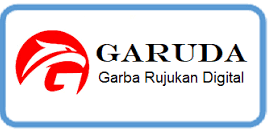PENGARUH PENGELASAN FCAW TANPA DAN DENGAN PENAMBAHAN PANAS TERHADAP PERUBAHAN SIFAT MEKANIK DAN STRUKTUR MIKRO SAMBUNGAN LAS
DOI:
https://doi.org/10.34151/technoscientia.v7i2.204Keywords:
FCAW Weld, Photo Macro, Micro Structures, Tensile Strength and HardnessAbstract
The Welding processes are delivery used joining steel, especially used in civil construction, piping and ship manufacturing. Many of the benefits that can be obtained from welded joint is the joining can be cheap, rapid manufacturing, varied shape and lighter construction. One of the welding techniques that is widely used for joining the steel construction is Flux Core Arc Welding (FCAW). The problem that found in welding joints is the tensile strength in welding area is low and uneven hardness in the weld joint. The aim of this research was to determine the mechanical properties of FCAW Welding process and find out micro structures formed by the addition of heat around the welding.In this research, FCAW welding has been divided into two groups; the ones group is manufacturing without addition of heating, and the second group is manufacturing by heating 200 °C. Every group of manufactures would be test by chemical compositions, macro photos, micro photos, tensile strength and hardness number. The results of this research shows that the addition of heat at 200 °C could be increase the yield strength and ultimate strength. The heating also could be very small impact on the change in the hardness of weld area, but it could be reduce the hardness in HAZ area significantly. Micro structure formed then the weld area has been dominated by acicular ferrite micro structure, grain boundary ferrite dominate in coarse HAZ, the pearlite and ferrite with grain aggrandizement take place in smooth HAZ and base metals.
References
Cary, H.B., 1994, Modern Welding Technology, Prentice Hall, Eng-lewood Cliffs, New Jersey.
Feng Zhili, 2005, Processes and Mechanisms of Welding Resi-dual Stress and Distortion, Pad-stow, Cornwall, England.
Harrison, P.L., danFarrar, R.A., 1981, Influence of Oxigen-rich Inclu-sions on the γ a Phase Transformation in High Strength Low Alloy (HSLA) Steel Weld Metals, Journal of Material Science, 16, pp 2218-2226.
Okumura, T., dan Wiryosumarto, H., 2000, ”Teknologi Pengelasan Logam”, PT Pradnya Paramita, Jakarta.
Song, J., Peters. J., Noor, A., and Michaleris, P., 2003., “ Sensitivity Analysis of The Thermomecha-nical Response of Welding Joints” Journal of Solids and Struktures 40, Hal 4167-4180.
Sorensen. M.B., 1999, “Simulation of Welding Distortion in Ship Section’, Depaetment of Naval Architecture dan Offshore Engi-neering, Technical University of Denmark.
Subeki, N., 2009, Optimalisasi Peng-gunaan Heat Input pada Penge-lasan Pipa Spiral untuk Mening-katkan kualitas Sambungan”, Jurnal Teknik Industri Vol. 10 Nomor 2. Agustus 2009 Hal 141-147, Malang.
Subeki, N., 2011, Optimalisasi Kandung-an Mn pada Filler untuk Menda-patkan Ketangguhan dan Keke-rasan”, Jurnal Teknik Industri Vol. 12 Nomor 1. Februari 2011 Hal 43-52, Malang.
Surian, E.S., Ramini De Risone, N.M., Svoboda, H.G., Rep, R., and De Vedia, L. A., 2010 ” SMAW, FCAW, and SAW High-Strength Ferritic Deposits : The Challenge Is Tensile Properties” Welding Journal Vol. 89 Hal: 54-S- 64-S
Viswanathan. R dan Stringer. J., 2009, “Failure Mechanisms of High Temperatur Components in Power Plants”, Electric Power Research Institute,Palo Alto, CA 95070.







